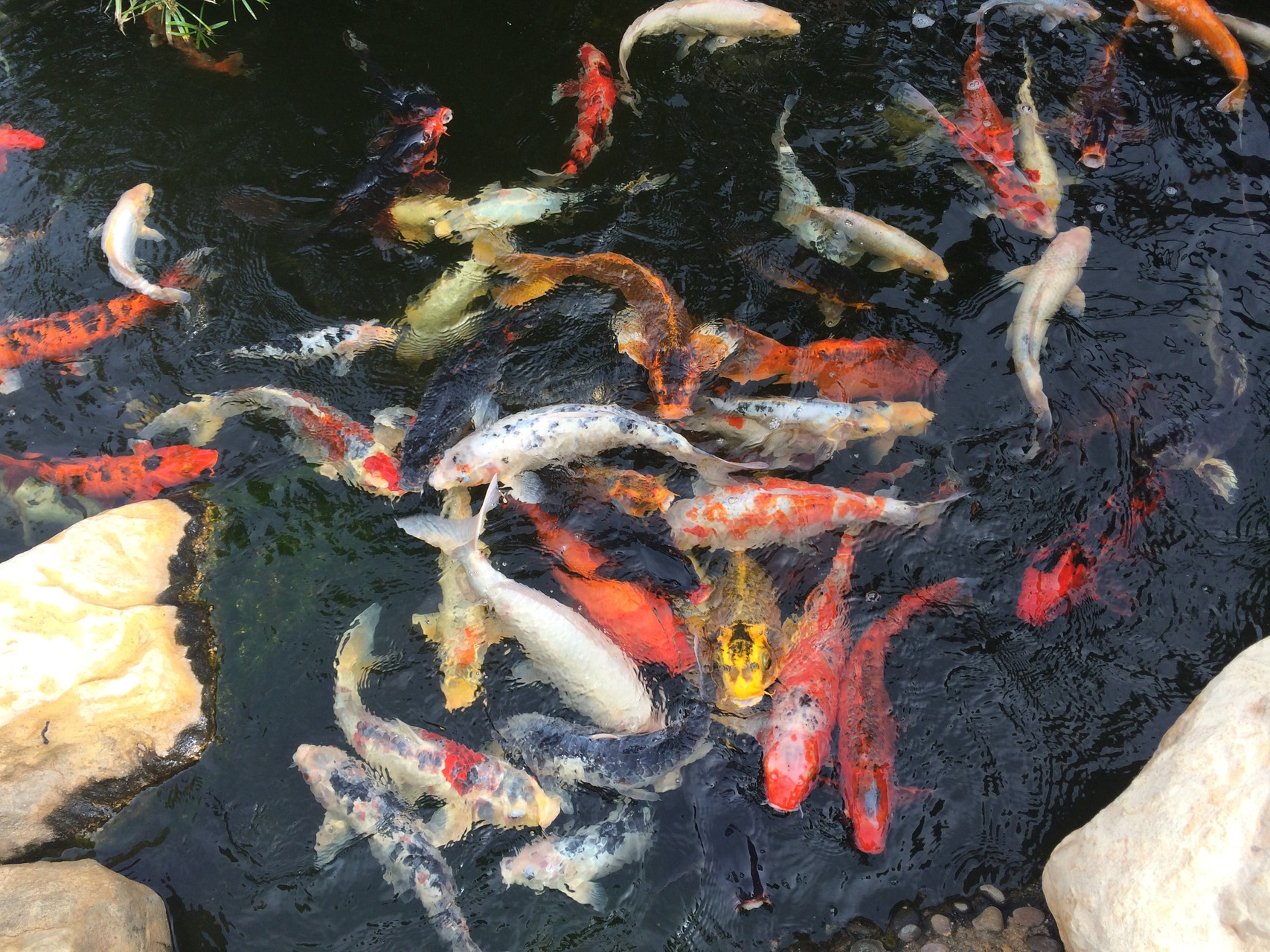Revisited: Prepping Your Koi Pond

The days are getting warmer, and April showers are bringing spring flowers. That means its also time to head out to our koi ponds and anxiously await the days when we can sit out by them and reflect peacefully for hours. However, there are some precautions and care you must exercise as you prepare your koi pond for the spring.
The greatest part about a koi pond is that spring maintenance is not too intense, if winterizing was done previously. The first steps to take are to clean out your intakes and filters, and remove additional debris that may have settled over the winter.
Beneficial bacteria also need time to re-propagate. Whether you keep your filter on or off during the winter, it will still take time for beneficial bacteria to circulate and re-grow. Testing for nitrites, ammonia, and alkalinity will show the current levels of these bacteria. If nitrites and ammonia levels are higher than usual, this means the bacteria havent fully propagated yet and are having trouble decomposing waste. Low alkalinity can also be a sign of this lack of biofiltration. During the period of bacterial propagation, take extra care in watching your fish for signs of abnormal behavior or disease.
As the pond water warms throughout the season, your kois metabolisms and appetites will increase. When the water reaches 50 degrees Fahrenheit for a steady week, you can begin to feed your fish. Start with something simple such as a wheat germ based food. The kois metabolism will still be rising from the cold winter days, and bacteria will still be propagating to a high enough level where they can break down greater amounts of waste. Once your bacteria levels are normal, usually by late spring, it is time to feed your koi their normal diet.
There is, however, one important thing to remember: when we get that first whiff of a spring breeze, and the excitement pours through us to go out and get new koi for our ponds, patience must be exercised. If you are to add new koi to your pond, the most important step is to remember to practice good quarantine procedures.
All new koi added to your pond should be kept in a separate, specifically designated quarantine pond, or holding tank, for at least thirty days. Koi can carry numerous parasites and diseases; however Koi Herpes Disease (KHV) and Spring Viremia of Carp (SVC) are two particularly troublesome viruses that will quickly spread to your other fish. KHV will cause sores and lesions, while SVC causes lethargy, hemorrhaging, and other anomalies. Both are highly contagious and can cause death. It is important to look for signs of disease and any abnormal behavior during the thirty-day quarantine period. If you do see abnormalities in the new fish, keep them aside.
A good addition to a koi pond is water lettuce. This plant is a free-floating species upon which koi love to nibble. Giving your fish water lettuce is a sure way to make them happy. It can also provide place for beneficial bacteria to propagate. However, this plant is incredibly invasive. Its roots can clog pipes, and if it grows broad enough to cover the pond surface, it will cause oxygen depletion. If water lettuce is kept culled and maintained, it can provide healthy water and a little bit of greenery for your pond.
Bringing a koi pond healthily into the spring season requires patience, but the results are worth it. After all, we create our ponds to feel serenity and beauty; shouldnt the care we put into them feel just as peaceful?
www.aquatropic.com
Works Cited:
Staff. Spring Care for Your Koi. Quality Koi Company Online. 2008. URL: < http://www.qualitykoi.com/koi-fish-care/spring-koi-fish-care.php